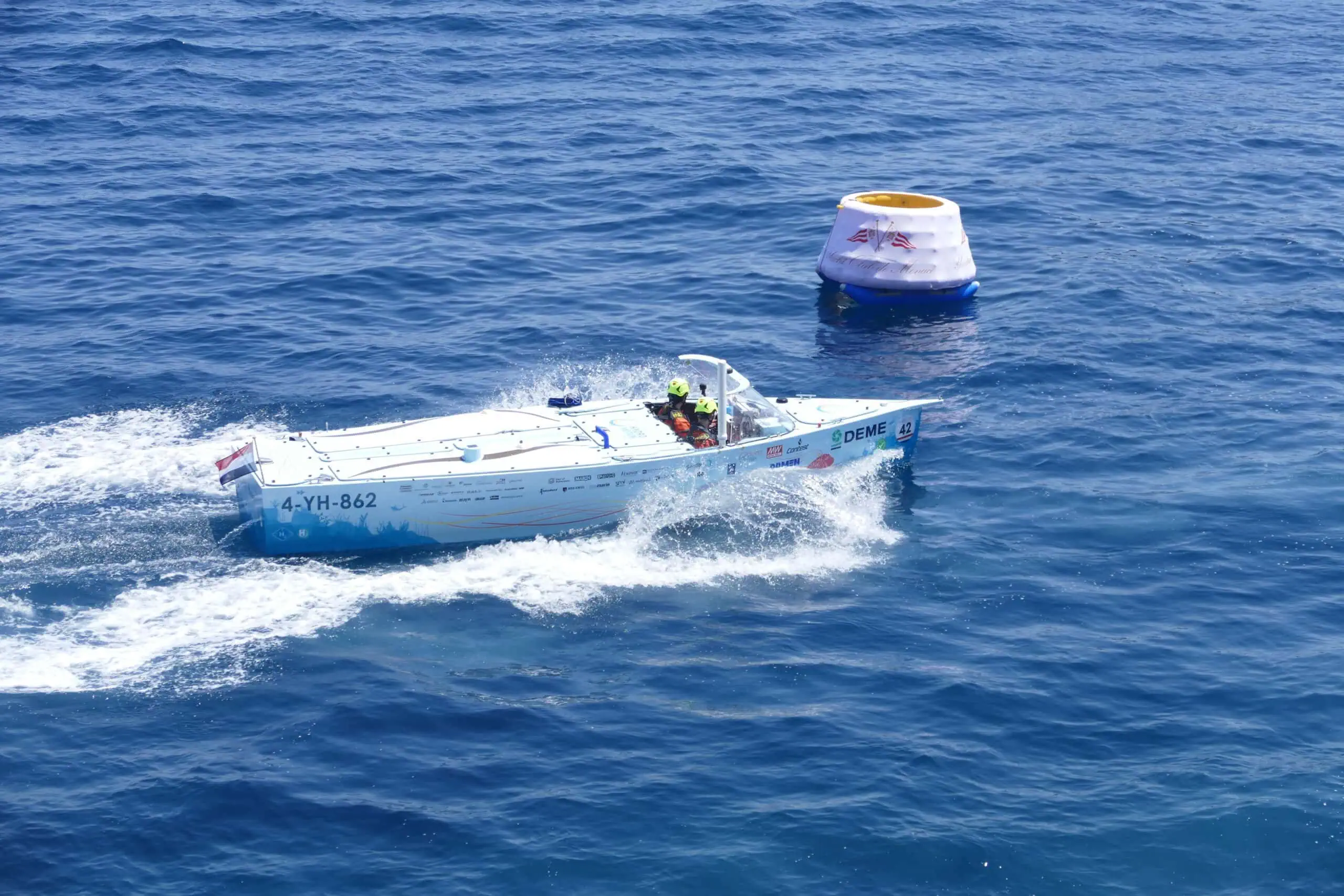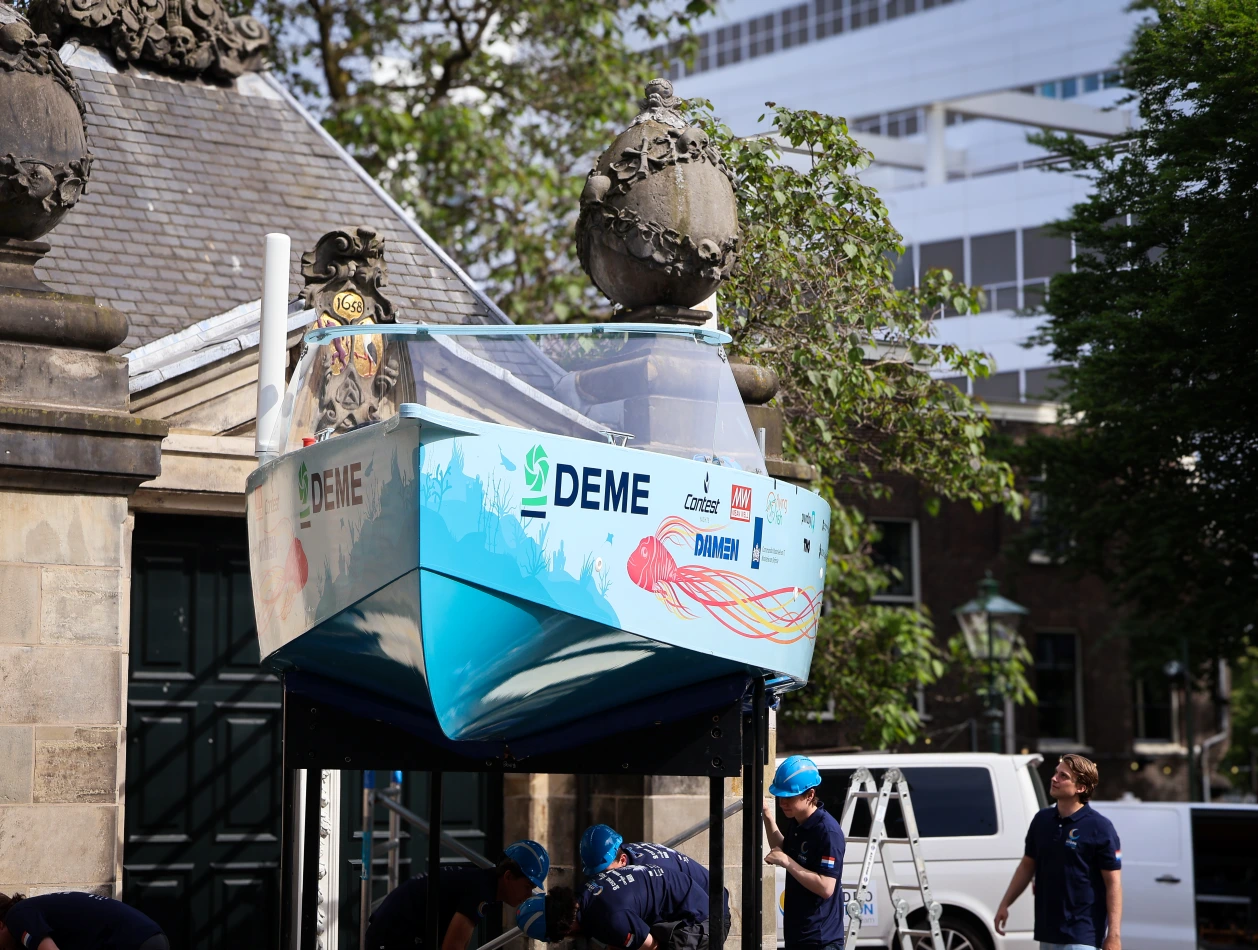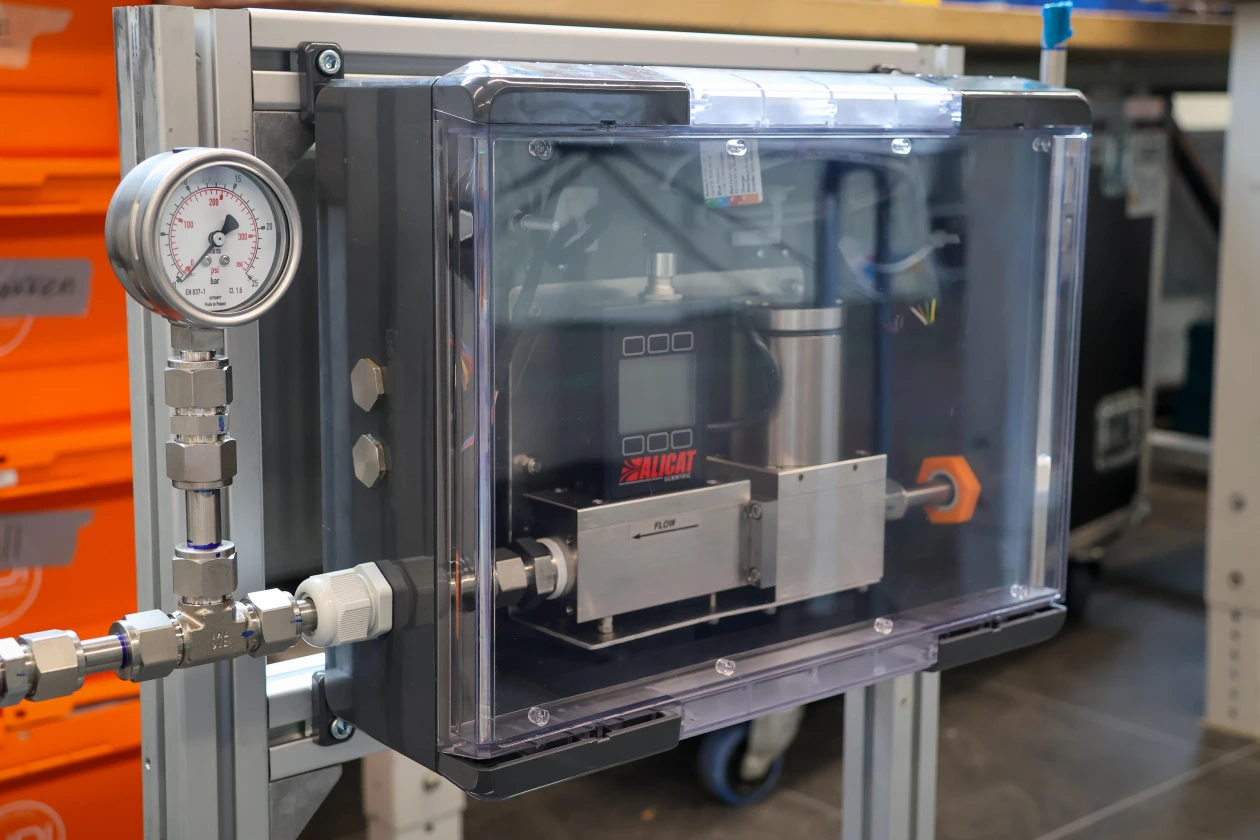Liquid Hydrogen Fuel Systems in Maritime Innovation
Alicat MCRQ Mass Flow Controllers Support TU Delft Hydro Motion Team’s Hydrogen Boat for the Monaco Energy Boat Challenge

Empowering Discovery on Water

The transition to sustainable energy in the maritime sector demands more than ambition, it requires precision. That is why Alicat Scientific is proud to support the TU Delft Hydro Motion Team as a Bronze Partner in their groundbreaking 2025 project. They aim to design, build, test, and race Mira, a hydrogen‑powered foiling boat designed with a dual hydrogen system, one gaseous hydrogen tank and one fully integrated liquid hydrogen tank, competing at the Monaco Energy Boat Challenge.
Equipping this innovative fuel system with our MCRQ mass flow controllers enables the team to manage hydrogen fuel delivery safely and accurately, helping them prove that liquid hydrogen can power the next generation of clean marine propulsion.
The Challenge: Making Hydrogen Work for Maritime Transport
The goal of the TU Delft Hydro Motion Team is as ambitious as it is inspiring. They plan to design, build, test, and race a fully functioning boat equipped with a dual hydrogen system, all within one year, and to compete at the Monaco Energy Boat Challenge 2025.
But beyond the competition itself, the team’s mission reaches further. By proving that a boat can operate successfully on liquid hydrogen, they aim to spark broader innovation across the maritime sector. This work demonstrates hydrogen’s potential as a clean, scalable alternative to fossil fuels.
This project builds on the team’s past successes with compressed hydrogen, already a proven, zero‑emission marine fuel. Now, as the team pushes for more range and onboard efficiency, storage volume and energy density are the next big challenges.
To solve this, the team chose to work with liquid hydrogen. Its volumetric energy density is three times higher than compressed hydrogen at 350 bar. That makes it a powerful way to save space and extend endurance, key requirements in performance vessels.
But storing and using liquid hydrogen introduces challenges. The fuel must be kept at −253°C, requiring insulated cryogenic tanks. The team addresses this with a custom double‑walled, vacuum‑insulated carbon‑fiber tank system. This limits heat ingress to just 7 watts, equivalent to a small LED bulb. To avoid wasting energy, waste heat from the fuel cell is used to bring hydrogen up to the required ~20°C operating temperature before reaching the fuel cell.
The trade‑offs (boil‑off rates, tank volume, storage weight, and onboard vaporization) are exactly the kinds of real‑world constraints this project is designed to explore. And while Mira is a compact foiling boat, the bigger question remains: could a system like this scale to larger vessels, such as ferries? That is the kind of thinking Alicat is excited to support with partners who are pushing the boundaries of what is possible.
The Role of Alicat: Flow Control After Vaporization

To meet this need, the team integrated the Alicat MCRQ mass flow controller immediately downstream of the vaporizer. This device manages the mass flow of hydrogen gas into the fuel cell and enables:
- Delivers stable and precise feed pressure to the fuel cell.
- Measures hydrogen consumption through real‑time mass flow monitoring
- Monitors pressure and temperature to help prevent fuel cell issues like dehydration or fuel starvation.
- Supports test validation and real‑world performance optimization.
The MCRQ is compact, ATEX Zone 2 certified, and designed for fast system response. It integrates easily into the tight constraints of a race‑ready vessel. Its role is vital during system development, helping the team collect data, tune parameters, and prepare for race-day performance. In short, it helps translate bold hydrogen engineering into operational reliability.
Why the MCRQ Was Selected

- Flow range of 0 – 1.5 g/s, which translates to ± 0.01 g/s uncertainty at a nominal 1 g/s flow, small enough to maintain consistent fuel cell output.
- 4 – 20 mA analog output, chosen specifically for its high‑speed update rates (kHz range)
- ATEX Zone 2 IIC certification, requiring minimal additional safety infrastructure.
- Upstream valve position, enabling precise regulation of downstream feed pressure, supporting target values like the ~2.5 bar commonly seen in fuel cell stacks.
- ± 1.0% accuracy of reading (or ± 0.2% of full scale)
Together, these features provide the team with a robust, compact, and responsive solution, a key enabler of real‑world testing and a step toward scalable, clean hydrogen propulsion.
Competition Progress and What Comes Next
Throughout the week, Mira showed what is possible with hydrogen. The team sailed primarily using their gaseous hydrogen tank. The liquid hydrogen system was fully built, tested on land, and integrated into the boat, ready for future races. Achieving this dual system is a major milestone that sets the stage for future progress.
In competition, Mira delivered impressive results: 3rd place in the Manoeuvrability and the 16 Nautical Mile Speed Race, 2nd place in the Speed Record, with a top speed of 50 km/h, and 1st place in the Endurance Race, proving reliability over three steady hours. These strong performances secured the team an impressive 2nd place overall in the SeaLab Class, a testament to the resilience of the boat and the dedication behind it.
Alicat’s instrumentation played a vital role by ensuring stable, precise hydrogen flow, supporting safe fuel cell operation, and valuable performance data under real race conditions. This partnership represents more than just providing a flow controller. It shows how sustainable innovation emerges when education, engineering, and real‑world testing come together. By supporting the Hydro Motion Team and their work on Mira, Alicat contributes to:
- Advancing liquid hydrogen fuel systems in marine transport
- Empowering hands‑on engineering education
- Promoting practical low‑emission propulsion technologies
We are honoured to be part of this project and proud to know that our instruments are helping to steer the future of clean maritime energy, and we look forward to seeing the next team take this breakthrough even further.
Together, we are not just measuring hydrogen. We are helping to Fuel the Future.